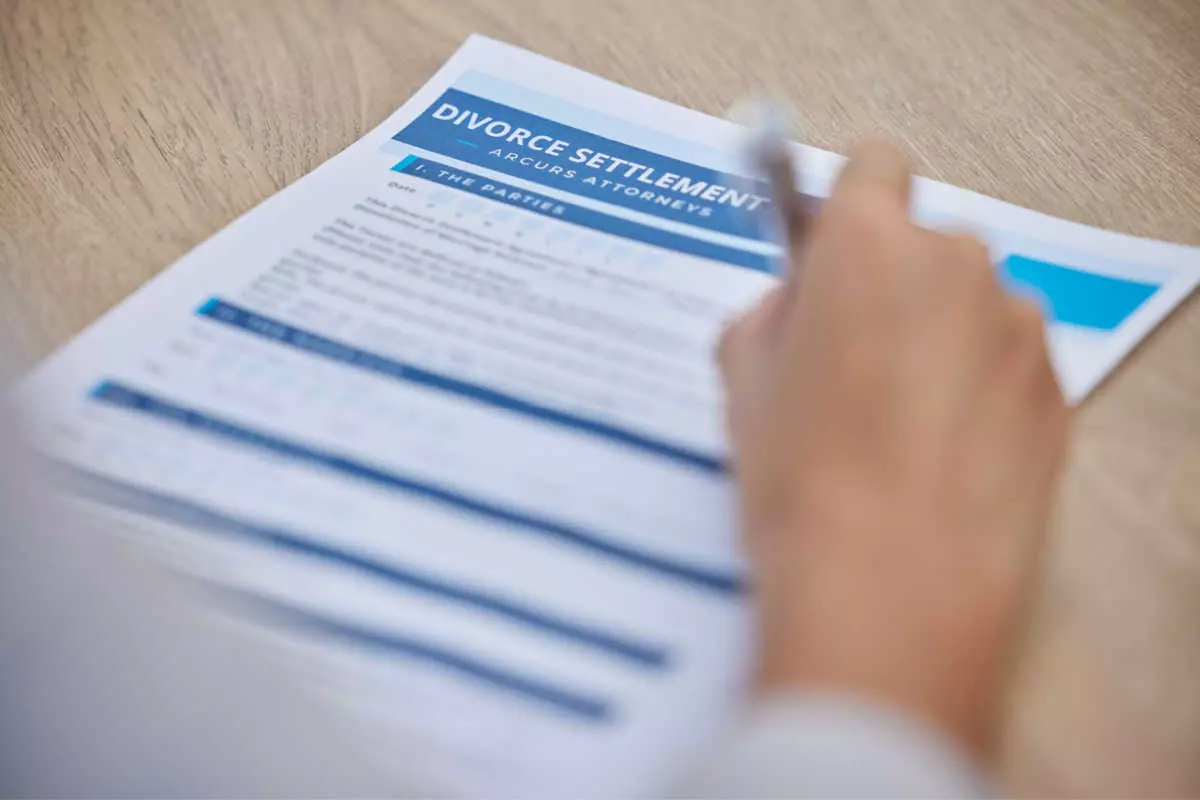Settling a divorce can be stressful. Not only do people have to deal with an emotional rollercoaster, but also with a lot of paperwork to split finances and assets equally.
Like any other asset acquired during the marriage, a pension is also considered joint marital property. Therefore, it is also subject to division when a pair is going through a divorce.
This article will guide you through how pensions work in a marriage and how to keep your pension in a divorce.
How Does a Pension Work?
Pensions are periodic payments that individuals receive as a benefit after they retire. Unlike a 401(k), a defined-contribution plan that allows employers and employees to contribute funds, a pension fund is a defined-benefit plan. This means that after retiring, the pension may be paid out as monthly payments over the lifetime of the retiree or a lump sum.

Currently, traditional pensions are not as popular as they once were and are usually only offered in the public sector. Conversely, employers in the private sector typically provide 401(k) plans instead. A pension may be provided to the following sectors:
- Active and retired military
- Teachers
- State and federal government employees
- Some private-sector jobs and other public-sector professions
Part of your pension generated before your marriage is considered separate property. However, the portion of the pension earned during marriage is considered joint marital property and, like any other asset, it may be split by the judge during a divorce. However, keep in mind that the classification of a pension as marital property depends on the laws of the specific state and other factors such as the length of the marriage and any prenuptial or postnuptial agreements in place.
Why It Is Important to Protect Your Pension in Divorce
Protecting your pension during a divorce is essential for your financial well-being and future retirement plans, similar to learning how to protect your 401k from a stock market crash. Pensions can represent a significant portion of a couple’s net worth, and losing a large part of it during the division of assets can impact your retirement security. By taking the necessary steps to protect your pension, you help ensure that you have a stable income source during your retirement years.
Taking Steps to Secure Your Pension
Before you assume that you will lose half of your pension during a divorce, let us tell you that this is not always the case. There are ways you may be able to protect your entire pension fund in exchange for other assets acquired during your marriage (depending on the specific circumstances and the negotiation process during the divorce). To do so, here are some tips you should consider:
Check the Details of Your Pension Plan
To start, take a look at your pension plan summary before getting into the divorce settlement. A plan summary is a document that includes all the details about your pension plan’s benefits. Employers usually publish this plan every few years, so you can either request a copy from your workplace or your plan administrator. The summary plan includes:
- Description of the plan type
- How the plan is administered and the contact details of the plan administrator
- When and in what form the benefits will be paid
- Description of the rules relating to qualified domestic relations orders (QDROs)
- If the members are part of the Social Security retirement benefits
- When the member will be disqualified
- Rules and regulations about the conversion to another plan
- A detailed description of the member’s responsibilities under the plan
An important factor during a divorce is to check your pension payout type. There are usually two types of payouts that you sign at the start of the plan:
- Single-life payout payments stop when one of the spouses dies
- Joint-life payouts are when the surviving spouse continues receiving payments after the other spouse dies
However, there may be other payout options depending on the pension plan.
While your divorce pension payout can play a significant role during the negotiation of the distribution of the assets, your state’s law will govern how your assets are distributed.
You should also check if your plan includes a survivor’s benefit, which allows family members of the deceased to receive some benefits. For example, an ex-spouse can be eligible for some benefits if the couple has been married for over 10 years.
Hire an Experienced Attorney
Just like other legal proceedings, a good divorce attorney can help you get the best settlement in court. An experienced attorney has probably dealt with many divorce cases in the past and can walk you through the complicated process of how to keep your pension in a divorce. Their job is to represent your best interests to the judge.

If you have worked with a lawyer in the past, it may be better to use their services as they are familiar with your circumstances. You can also search for an attorney through reputable sources like state bar associations or legal directories.
Review the Laws of Your State
When it comes to splitting property during a divorce, every state has its own rules and regulations. Even though pension is subject to division between former spouses, it doesn’t usually happen automatically. Instead, your ex-spouse will have to make a specific request to receive a portion of your retirement benefits by providing a qualified domestic relations order (QDRO).
A QDRO is a document that recognizes the dependent, usually a spouse, a former spouse, or children, to receive a portion of the individual’s assets. After the petitioner submits this file, the judge will be guided by the state’s governing divorce laws and the length of the marriage. You can find more detailed information about each state here.
How to Protect Your 401(k) in a Divorce
If you work in the private sector, you might wonder what happens to a 401(k) in divorce. 401(k) plans are considered marital property and might be split between ex-spouses.
Unless you have signed a valid prenuptial agreement before marriage, your former spouse may be entitled to take 50% of your retirement account. However, the division of assets will be governed by state law and may be influenced by the length of your marriage and other factors.
In most states, the court divides assets equitably instead of equally. It is referred to as an equitable distribution, and it means that the judge will try to fairly allocate assets acquired during the marriage between the two. There are also community property states where assets are divided equally between spouses.
Unlike pension plans, most 401(k) plans allow you to withdraw funds before the age of 59 but with a 10% penalty fee. However, there is a chance that you may not pay this fee for withdrawal in a divorce if you follow specific rules, including presenting a QDRO.
A QDRO is used to provide instructions to the plan administrator on how to divide the 401(k) account between the ex-spouses, but it does not actually create two separate accounts. The plan administrator will follow the instructions in the QDRO to distribute the funds accordingly.
Acquiring this document may incur additional costs, but it can help you take your portion of the plan and continue contributing to it individually.
Ex-spouses can also negotiate retirement accounts during a divorce. Typically, the individual with a 401(k) account will offer other equitable assets as a way to protect the retirement account. However, keep in mind that you shouldn’t look for ways of how to hide your 401(k) in divorce, as you will be required to present the complete truth during the proceeding.
How to Protect Your IRA in a Divorce
IRAs or Roth IRAs are individual retirement savings accounts that are not tied to an employer.
Additionally, a Gold IRA is another type of individual retirement account that allows you to invest in precious metals such as gold, silver, and platinum, providing a hedge against different types of inflation and market volatility. Individuals can set up an IRA on their own and make contributions, which may be tax-deductible in the case of a traditional IRA or made on an after-tax basis in the case of a Roth IRA). Traditional IRA gains grow tax-deferred, with withdrawals taxed as income. Gold IRA gains also grow tax-deferred, with tax implications varying by account type and circumstance. Conversely, the money grows tax-free in a Roth IRA.

In most cases, an IRA is split between the two former spouses, and it may be difficult to keep all of your joint accounts fully to yourself. However, unlike 401(k) retirement accounts, a QDRO is not needed to split the IRA. Instead, the court usually divides the funds according to the “transfer incident to divorce.” This incident implies that you can separate or rollover your IRA funds completely tax-free.
Once the IRA has been split, it is advised to update the beneficiary on the account to ensure you leave the funds to the correct individual following your passing.
If you choose to keep your ex-spouse as the beneficiary after the divorce, they may continue receiving benefits. However, this depends on the terms of the IRA and any post-divorce agreements or court orders. While it is possible for the ex-spouse to remain a beneficiary, it is not guaranteed.
The account holder has the power to designate or change the beneficiary of their IRA. If the account holder wants to keep their ex-spouse as the beneficiary, they can do so by updating the beneficiary designation.
Negotiate an Alternative
Coming out with the best deal after a divorce case is rarely easy. Most people have to face their stubborn ex who will try to protect their own interests, as well as spend a lot of money on attorneys, legal advice, and acquiring a QDRO.
If you have a large pension or a retirement account and want to protect it, you might consider having a conversation with your ex-partner and offering them other assets instead. For example, if you own half of the house, you can offer them the entire property. However, it’s always important to consult with your attorney first, as they are familiar with divorce proceedings and can better negotiate on your behalf.
Conclusion
We should also note the importance of a prenuptial or postnuptial agreement, which can be crucial in protecting one’s pension or other retirement accounts in the event of a divorce. And we recommend seeking out more comprehensive information on pension plans, retirement accounts, and the variations in state laws to ensure you find accurate and useful information for your specific situation.
Going through a divorce is a tough and cumbersome process. Former spouses usually have to deal with splitting their property fairly, and both sides try to grab the most they can. So if you wonder: “How do I protect my retirement in a divorce?” let us tell you that it depends on multiple factors.
You first need to check the terms and conditions of your pension plan and the state laws governing divorce pension and divorce retirement accounts. Next, make sure to hire an experienced attorney. Finally, sit down and talk with your ex before taking your case to court, as you may be able to reach a negotiated settlement that is mutually beneficial and fair.
FAQ Section
How Are Pensions Valued in Divorce?
Pensions are valued in divorce by determining the present value of the future pension benefits that were earned during the marriage. This calculation often requires the expertise of a financial professional, such as an actuary or a Certified Divorce Financial Analyst (CDFA), who can consider various factors like the participant’s age, years of service, projected retirement age, and life expectancy.
Can My Ex-wife Claim My Pension Years After the Divorce?
Your ex-wife may be able to claim a portion of your pension years after the divorce if the pension was not properly addressed or divided during the divorce process. However, if a qualified domestic relations order (QDRO) was issued during the divorce and properly divided the pension, then your ex-wife may not be able to make additional claims on your pension in the future.
Does Permanent Alimony End at Retirement?
Permanent alimony may end at retirement, depending on the terms of the alimony agreement and the laws of the state where the divorce was granted. In some cases, alimony payments may be reduced or terminated when the paying spouse retires, especially if there is a significant change in income or financial circumstances. Consult with a family law attorney familiar with your state’s laws to understand how retirement may impact your alimony obligations. Also, ask about IRA protection from lawsuit by state.
Does a State Pension Go to the Spouse After Death?
In many cases, a state pension may provide survivor benefits to the spouse after the pensioner’s death. The specific terms of the pension plan will dictate whether the surviving spouse is eligible to receive these benefits. If the pension plan includes a survivor’s benefit, the surviving spouse may continue to receive a percentage of the pension payments after the pensioner’s death. It is essential to review the terms of your pension plan to understand the survivor benefits that may be available to your spouse.
James Miller is a Senior Content Writer at McGruff.com. He has a background in investing and has spent most of his career in the financial industry. He can trace his family tree back to the California Gold Rush when his ancestors risked it all to make it big in the west. He feels like he's following in their footsteps as he strives to make sense of today's gold market.
